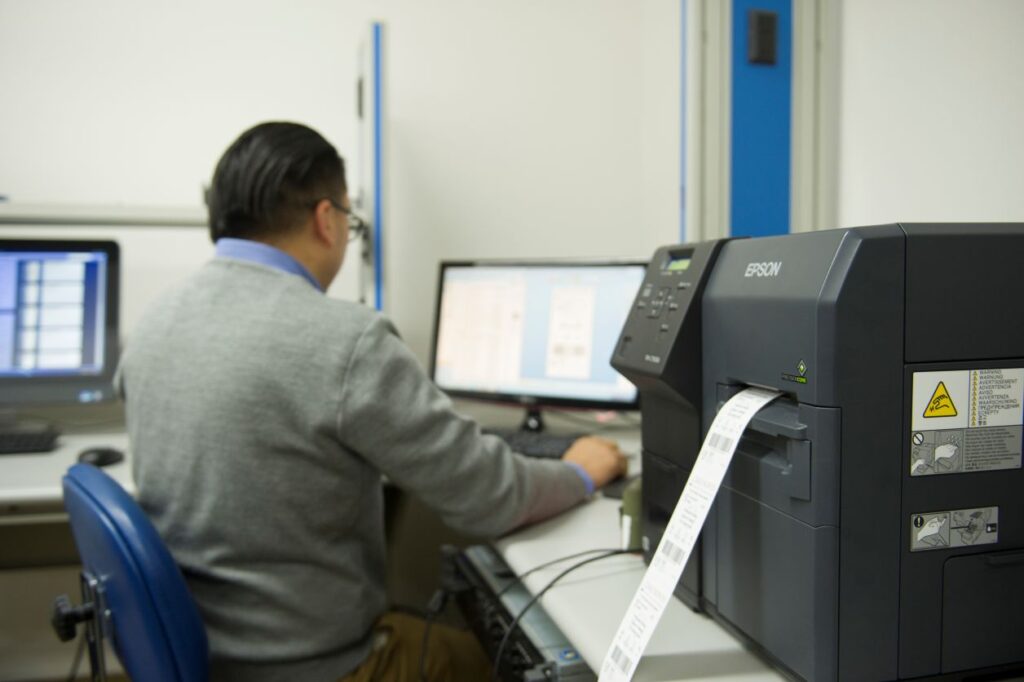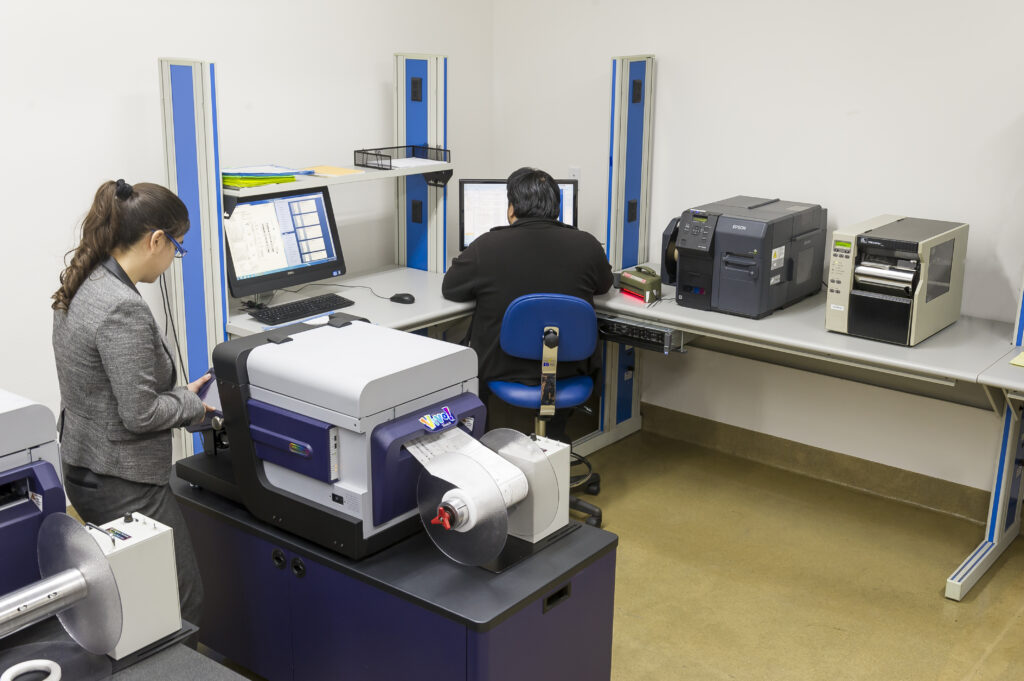The success of any medical device begins with clear, accurate labeling. In an industry where compliance and safety are paramount, medical device labeling provides essential information to users, including instructions, warnings, and Device Identifiers. Labels are more than just stickers—they are an integral part of ensuring regulatory compliance, providing quick information to health practitioners, and enhancing patient outcomes.
This article explores the best practices for labeling in medical device packaging, offering insights into how manufacturers can meet strict labeling requirements while safeguarding the end-user experience.
Understanding Medical Device Labeling Requirements
The success of any medical device relies on how well it communicates critical information to users. Regulatory bodies such as the FDA, the EU’s MDR, and international standards like ISO 15223-1 define strict labeling requirements that manufacturers must meet. These requirements ensure that all medical devices are accompanied by clear, accurate, and accessible information tailored to different types of devices and users.
Key Components of Medical Device Labeling
- Device Identification
Every label must include a Device Identifier—a unique code or symbol that allows traceability throughout the device manufacturing process and supply chain. This enhances patient safety and supports post-market surveillance. - Adequate Labeling
Labels should provide:- Adequate instructions for safe and proper use.
- Specific details on the potential risks, side effects, and sufficient warnings to guide medical professionals and end-users.
- User Labeling
Labels must address the needs of various user types, including:- Medical professionals (surgeons, nurses, or technicians).
- Device users (patients and caregivers).
- Experienced users (those trained in specialized equipment).
- Compliance with Regulatory Standards
Labels must adhere to both regional and global regulatory requirements, including FDA standards in the United States and MDR requirements in the European Union. Labels should also align with international standards for medical device labeling to support global distribution. - Label Durability and Material Selection
The labeling materials must withstand environmental conditions such as temperature changes, humidity, and sterilization processes. Labels should remain legible and intact throughout the product’s lifecycle to ensure long-term usability.
Best Practices for Labeling in Medical Device Packaging
Medical device labeling serves as the primary means of communication between medical device manufacturers and end-users, including medical professionals, caregivers, and patients. It ensures devices are used safely and effectively while reducing the risk of errors and maintaining compliance with stringent regulatory requirements.
The following best practices will help you label effectively and compliantly:
Device Identification
Device Identification forms the foundation of medical device labeling, enabling traceability and compliance with global regulatory obligations. Including a Device Identifier, such as a barcode or RFID tag, ensures that each product can be tracked throughout its lifecycle—from manufacturing and distribution to usage and post-market tracking.
Key Considerations:
- Ensure the Device Identifier complies with standards like the FDA’s Unique Device Identification (UDI) requirements.
- Use Automatic Identification technologies to streamline inventory management and support recalls if necessary.
- Incorporate traceability features that integrate with device history records, ensuring a complete audit trail.
Compliance with Regulatory Standards
Adhering to regulatory standards is non-negotiable in medical device labeling. Non-compliance can lead to delayed market entry, legal penalties, and compromised patient safety.
Strategies to Ensure Compliance:
- Stay aligned with evolving regulatory standards, such as FDA 21 CFR Part 801 in the U.S. and MDR 2017/745 in the EU, which mandate detailed requirements for device labeling.
- Collaborate with supply chain partners to meet regional requirements. For instance, EU MDR mandates multilingual labeling, while FDA regulations require clear warnings and usage instructions in English.
- Conduct rigorous testing to ensure label durability under diverse environmental conditions, such as sterilization or high humidity.
User-Focused Labeling
Effective user labeling addresses the unique needs of the diverse individuals who interact with medical devices. This includes providing comprehensive information to first-time users while offering technical specifications for experienced users and medical professionals.
Tailoring Labels for Different Audiences:
- Medical Professionals: Include detailed operating instructions, warning symptoms, and troubleshooting tips.
- Patients: Simplify instructions with plain language, visual aids, and universal symbols. For example, ISO 15223-1 standardizes medical symbols for clarity and accessibility.
- Retail Packaging: Highlight key benefits, usage scenarios, and regulatory compliance details to support consumer decision-making in retail settings.
Label Durability and Material Selection
The labeling materials must withstand the rigors of the packaging process, storage, and usage. Labels that degrade or become illegible compromise both compliance and safety.

Tips for Selecting Durable Label Materials:
- High-Performance Materials: Use durable polymers, such as polyester or polypropylene, which resist sterilization processes, moisture, and chemical exposure.
- Environmental Resilience: Ensure compliance with standards like ASTM D4332, which tests packaging and labels under extreme environmental conditions (source).
- Periodic Testing: Conduct routine integrity tests, such as adhesion and abrasion resistance, to validate durability.
Sustainable Labeling Practices
- Eco-Friendly Labeling Materials:
- Manufacturers are increasingly adopting durable materials made from sustainable sources to reduce their environmental footprint.
- These materials comply with regulatory requirements while supporting corporate sustainability goals.
- Reusable and Modular Labeling Systems:
- Modular labels allow updates to product information without generating excess waste.
- Reusable labels designed for outer packaging help reduce costs and improve sustainability in the packaging process.
Challenges in Medical Device Labeling
While medical device labeling is essential for communicating critical safety, usage, and compliance information, it presents unique challenges for manufacturers. From adhering to complex regulatory requirements to ensuring label durability, these obstacles can complicate the labeling process. Overcoming these challenges is vital for maintaining compliance, safeguarding patient safety, and achieving operational efficiency in the medical device industry.
Regulatory Complexity
The medical device industry is subject to varying and constantly evolving regulatory standards across global markets. Navigating these regulations can be particularly challenging when products are distributed internationally.
- Regional Variations: The FDA and EU MDR have unique labeling requirements, including content formatting and multilingual support. Non-compliance can delay market entry by up to 6 months.
- Frequent Updates: Keeping up with changes in regulatory obligations requires continuous monitoring and adjustments to labels.
Solution: Collaborate with regulatory experts to ensure labels meet both local and global regulatory compliance requirements. Implement advanced software solutions to manage and update labels dynamically.
Material Durability
Labels must maintain their integrity and legibility under diverse environmental conditions, including sterilization, transport, and storage. Failing to meet durability requirements can compromise patient safety and public health risks.
- Environmental Stress: Labels may face extreme conditions such as high temperatures, humidity, and exposure to sterilization chemicals.
- Wear and Tear: Prolonged storage or repeated handling can degrade labels, making critical information unreadable.
Solution: Use high-performance labeling materials that resist wear, chemical exposure, and environmental fluctuations. Conduct rigorous testing to verify compliance with performance standards under all potential conditions.
User-Centric Design Challenges
Creating labels that cater to diverse audiences—from medical professionals to patients—requires balancing technical detail with accessibility.
- Technical Complexity: Professionals may need in-depth operational instructions, while patients benefit from simplified guides.
- Accessibility: Patients with varying levels of literacy or those requiring visual aids may struggle with overly complex labels.
Solution: Develop tailored user labeling strategies, such as separate instructions for medical staff and end-users, while incorporating universal design principles like clear fonts, visuals, and color coding.
Traceability Across the Supply Chain
Ensuring accurate device history records and seamless traceability is critical but challenging in complex supply chains involving multiple stakeholders.
- Supply Chain Coordination: Consistency in labeling across global supply chains can be difficult to achieve.
- Recall Management: Inefficient traceability systems can delay recalls, increasing potential risks to patients.
Solution: Ensure that codes are prominently featured on label designs to enhance traceability. Some are even beginning to implement Automatic Identification technologies, such as RFID and barcodes.
Risk of Human Error
Errors in labeling activities, such as missing warnings, inaccurate translations, or formatting issues, can lead to significant safety hazards and regulatory penalties.
Solution: Automate the labeling process using advanced software to ensure accuracy and reduce human involvement in repetitive tasks. Conduct regular audits and validation checks to identify and correct potential errors.
Conclusion
The challenges manufacturers face in ensuring regulatory adherence, durability, and user-centered design highlight the complexity of this critical process. However, they also present opportunities for innovation—whether through the adoption of advanced technologies like smart labels and blockchain for traceability, or the integration of eco-friendly labeling materials. The path forward in medical device labeling is not just about meeting today’s regulatory demands but also anticipating the needs of tomorrow’s users and stakeholders.
By embracing precision, clarity, and technological advancements, manufacturers can not only comply with global standards but also contribute to enhanced patient care and operational excellence.
The commitment to effective labeling is a commitment to safeguarding lives, supporting healthcare providers, and ensuring that medical devices fulfill their intended purpose. In an industry where every detail matters, the investment in comprehensive, innovative labeling solutions is an investment in trust, quality, and the future of medical care.
Excellence in Medical Device Labeling
At PRO-TECH Design & Manufacturing, we understand the complexities of the labeling process and specialize in delivering compliant, durable, and high-quality solutions for the medical device industry. Whether you require customized labeling templates, robust testing, or support throughout your product development process, our team is here to help you achieve excellence.
Contact us today to learn how our expertise in medical device labeling can support your success while ensuring compliance and patient safety.
FAQs
- Why is labeling important in medical device packaging?
Labeling provides critical information to users, including instructions, warnings, and Device Identifiers, ensuring the safe and effective use of medical devices. Proper labeling also ensures compliance with regulatory requirements, enhances traceability, and minimizes potential risks to patient safety.
- What should be included on a medical device label?
Medical device labels should include:
- A method for traceability.
- Clear instructions for use under normal and customary conditions.
- Warnings and information on potential risks or side effects.
- Regulatory compliance symbols and information.
- Specific details tailored to the intended audience, such as medical professionals or patients.
- How can manufacturers ensure label durability?
To ensure durability, manufacturers should use high-quality materials that withstand environmental conditions, including sterilization, temperature changes, and humidity. Periodic testing under real-world conditions can confirm that labels remain legible and intact throughout the product lifecycle.
- What are some common challenges in medical device labeling?
Challenges include navigating complex and evolving regulatory requirements, ensuring material durability under harsh conditions, creating user-focused labels for diverse audiences, and maintaining traceability across global supply chains.
- What role does PRO-TECH Design & Manufacturing play in medical device labeling?
PRO-TECH specializes in delivering durable, compliant, and high-quality labeling solutions for the medical device industry. From creating customized labeling templates to conducting rigorous durability testing and providing regulatory guidance, PRO-TECH ensures that your labeling process meets the highest standards for safety, compliance, and efficiency.


